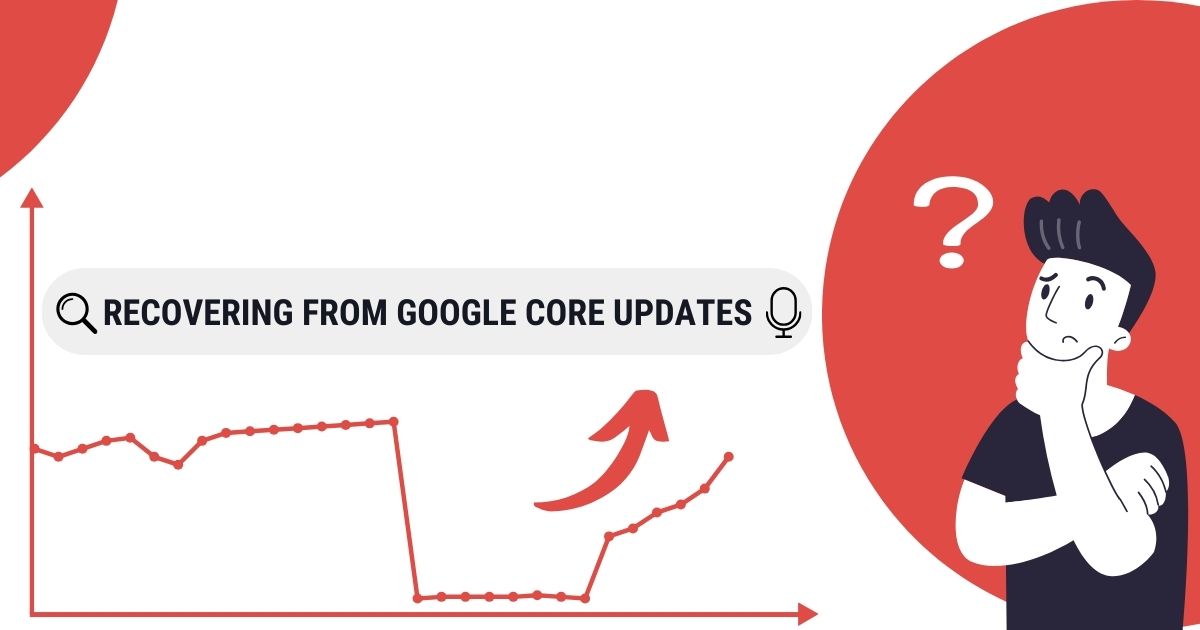Over the years, Google’s algorithm updates have become a regular occurrence, impacting how websites rank in search results. These updates, especially core updates, can significantly affect your website’s traffic and visibility. It may boost up your visibility or can bring it down to complete zero.
The recent March 2024 update has affected a lot of websites, few
So after careful study and experimentation we have prepared this guide.
This guide will equip you with the knowledge to understand core updates, assess their impact, and develop effective recovery strategies.
Lets first understand Google’s Algorithm
Demystifying Google’s Algorithms: How Search Works
Have you ever wondered how Google finds exactly what you’re looking for in a blink of an eye?
The secret lies in the algorithms of Google! These are sets of very intelligent commands that help it search through its colossal data bank and come up with the most helpful responses to your questions.
When it was first built, the algorithms of Google were simple, but as the amount of information online exploded, so did the need for more sophisticated systems.
Today, Google makes countless refinements to its algorithms throughout the year, most of which are so subtle that you wouldn’t even notice. Google makes these constant improvements to ensure it continues to deliver the best possible search results for its users.
What are Google’s Core Updates?
Core updates are significant changes made to Google’s core search algorithms. These updates aim to improve the user experience by ensuring search results are relevant, informative, and trustworthy.
They alter how Google processes and evaluates various ranking factors, including content, links, and technical aspects.
How to Identify the Impact of a Core Update
While Google announces major updates, numerous smaller adjustments occur throughout the year. To understand a core update’s impact, we need to analyze your website’s performance.
Here are 2 key things you need to look for:
- Traffic Fluctuations: Significant drops in organic traffic, especially within the first 48 hours of a core update rollout, might indicate an impact.
- Keyword Ranking Changes: Analyse how your rankings for targeted keywords have changed. Declines in rankings for crucial keywords suggest a need for adjustments.
So, if you are reading this article, your website must have been hit, so here are some recovery steps that can help you get back your Google traffic.
Recovering from a Core Update: A Four-Phase Approach
While recovering from a core update takes time and effort, a strategic approach can significantly improve your website’s performance. Here’s a four-phase recovery plan:
Phase One: Assess the Impact
- Data Collection: Gather data from Google Search Console, Google Analytics, and other relevant sources to identify which pages or sections of your website have been most affected.
- Data Segmentation: Analyse the data by segmenting it based on factors like page clusters, keyword groups, and user demographics. This helps us pinpoint specific areas requiring attention.
- Data Comparison: Compare current data with historical data to identify any correlations between seasonality and past traffic patterns.
Phase Two: Review the Search Engine Results Pages (SERPs)
- Analyze SERP Changes: Objectively evaluate how the SERPs for your target keywords have changed. Identify if Google now prioritizes different content types, search intent, or competitor websites.
- New and Removed SERP Features: Note any new SERP features introduced by Google or any features removed that might have impacted your visibility.
Phase Three: Review Our Website
- Content Depth and Relevance: Conduct a thorough review of your content, assessing its depth, comprehensiveness, and alignment with user search intent. Ensure your content provides all the information users seek and offers clear next steps. We recommend creating user personas to better understand the specific needs and expectations of your target audience. This will help tailor your content to their search intent.
- Data Accuracy and Currency: Make sure that the information on your website is up-to-date, particularly if you have content related to data-driven industry. Also, regularly updating statistics and examples builds user trust and content validity.
- Keyword Intent Matching: Ensure each page’s content clearly addresses the search intent behind the keywords it targets. We recommend using keyword research tools to identify the specific intent behind your target keywords and optimize your content accordingly.
Phase Four: Develop and Implement Recovery Strategies
- Define the Recovery Strategy: Before diving into tactics, develop a comprehensive recovery strategy that aligns with your overall business objectives. This strategy will guide future activities and keep efforts focused on achieving your goals.
- Content Improvement: Based on the insights from the previous phases, priorities content improvement efforts. This may involve creating new content, updating existing content, or optimizing content for better user engagement and search intent.
- Technical SEO Audit: Conduct a technical SEO audit to identify and address any technical issues that might be hindering your website’s performance. This could include fixing broken links, improving website speed, and ensuring mobile-friendliness.
Wrapping Up
As a SEO Company, we understand the importance to stay on top of the search result and we prioritize the search engine guidelines.
Google keeps on doing core to improve the user experience, so it’s an ongoing aspect of the SEO landscape.
We need to understand these updates, understand the impact it had on the site and come up with a step by step recovery plan.
Remember, SEO is an ongoing process, and continuous improvement efforts are crucial for long-term success.




